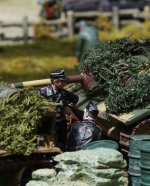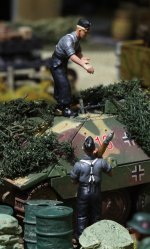This is an excerpt from this Wikipedia page:
https://en.wikipedia.org/wiki/Long_Range_Desert_Group
In October 1941 the LRDG was expanded to 10 patrols by the simple method of splitting the existing patrols into two-half patrols; the
New Zealanders formed A Squadron comprising 'R1', 'R2', 'T1', and 'T2' Patrols and the British and Rhodesians formed B Squadron comprising 'G1', 'G2', 'S1', 'S2', 'Y1', and 'Y2' Patrols. The 'H' Patrol had been disbanded in September 1941 after three months service.
[20]
These two squadrons were joined in December 1941 by the
Indian Long Range Squadron, which had been formed by volunteers from the
2nd Lancers,
11th Cavalry and the
18th Cavalry, all part of the
3rd Indian Motor Brigade.
[21] The Indian Squadron was organized along ethnic and religious lines with the first two patrols originally known as 'J' (
Jats) and 'R' (
Rajput) Patrols. Their designations were changed to 'I1' and 'I2' to avoid confusion.
[21]
In October 1942 two further Indian patrols were formed: 'M' (
Muslim) and 'S' (
Sikh) Patrols, which became the 'I3' and 'I4' Patrols.
[21] No. 1 Demolition Squadron, nicknamed "Popski's Private Army" and commanded by Major
Vladimir 'Popski' Peniakoff, was briefly attached to the LRDG beginning in December 1942.
[22]
The vehicles of each patrol adopted their own markings. The New Zealand 'R' Patrol used a green
Hei-tiki with a red tongue painted on the right side of the
bonnet of the vehicle, and on the left a
Māori place name beginning with the letter 'R' (for example, '
Rotowaro').
[23]
The 'T' Patrol vehicles had a black
Kiwi over green 'grass' and a Māori name starting with 'Te' (for example, '
Te Anau') in the corresponding places.
[23]
This vehicle has T9 markings and a name prefixed by 'Te' on the bonnet - I therefore suspect this Figarti model represents the Kiwi manned 'T' Patrol.
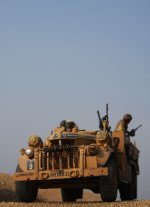
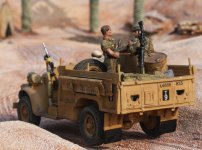
This Figarti model has R2 markings (but has TU TIRA on the left side of the bonnet) - does this represent a New Zealander A squadron R2 Patrol?
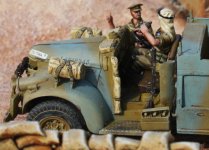
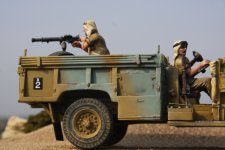
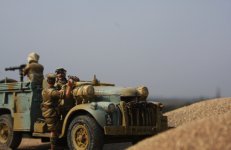
The 'W' Patrol vehicles had a Māori name or word starting with 'W' painted on their vehicles.
[23]
The British 'G' Patrol vehicles carried no distinctive markings, although some vehicles had the Guards insignia. They took over 'W' Patrol's vehicles when that unit was disbanded.
[23]
The 'Y' Patrol vehicles were slightly different; 'Y1' half-patrol vehicles all had names of famous drinking establishments (such as 'Cock O' The North') and 'Y2' half-patrol had names from the "
Three Musketeers" books (for example, '
Aramis') on the left sides of their vehicle bonnets.
[23]
The Headquarters Section used a sequence of letters arranged in a square (see photo of "Louise").
[24]
The Rhodesian 'S' Patrol vehicles had names with a Rhodesian connection (such as '
Salisbury') painted on the left side of the vehicles' bonnets.
[23] By 1943 the practice of naming replacement vehicles was dropped.
[25]




